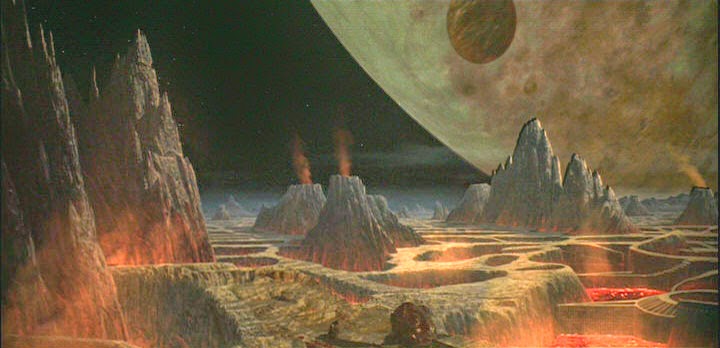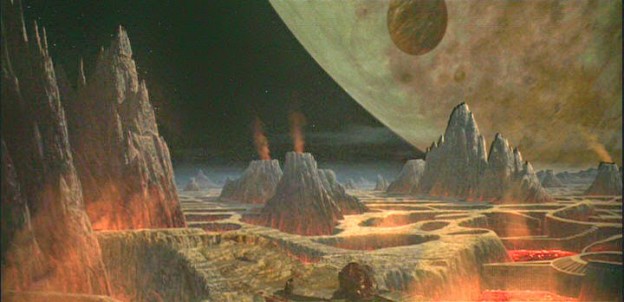The second part, from the fascinating forgotten work Oddities: A Book of Unexplained Facts (Allan, London 1928) by R.T. Gould, on the non-existent planet Vulcan. The first part can be found here.
 |
| Vulcan Landscape (from Star Trek, the Motion Picture) |
He also calculated that Vulcan ought to be in transit on the sun's face on or about April 3rd and October 6th of every year, at which times it should, of course, be visible in the same manner as it had been to Lescarbault. He did not hold out much hope of its being seen at other times, since he computed that its lustre would be so feeble that it might easily remain unseen, even during a total eclipse of the sun.*
* Proctor has questioned this statement. By his calculations, Vulcan and Mercury, seen during eclipse at their greatest angular distance from the sun, would appear about equally bright.
Continue reading



